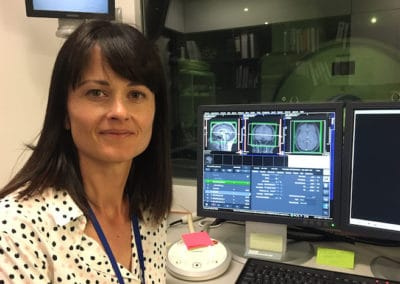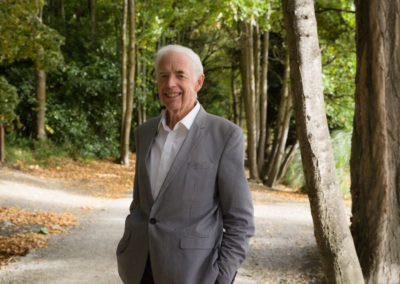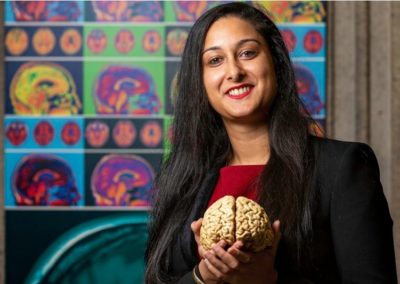Tell us a little bit about your research, what do you do? What do you enjoy most about your work?
I am very interested in multi-scale research, examining the effects of disease and treatment from the level of individual connections between brain cells to their influence on the behaviour of the organism. Therefore, in my PhD, I used a wide array of experimental techniques to study how genetic mutations found in Autism Spectrum Disorders affect cells and networks in different regions of the brain, and whether treatments given from the beginning of brain development can prevent these deficits from presenting in the first place.
Recently, I have established the use of miniaturised microscopes (‘miniscopes’) to record brain activity in freely moving rodents. We are using these tiny 3 gram microscopes to better understand changes that occur in a model of Alzheimer’s disease. The real-time readout of brain activity at single-cell resolution could provide valuable insights into the learning and memory deficits observed in Alzheimer’s disease. Establishing this technique required creative problem-solving and thinking outside of the box, and overcoming each obstacle was very rewarding. I thoroughly enjoy the use of this powerful cutting-edge technology in my research to do experiments that we have never been able to do before in New Zealand.
How did you get interested in (neuro)science?
I have always been an extremely curious individual, from asking many ‘how’ and ‘why’ questions in my classes at school, to being utterly intrigued by how elegantly the human body functions in health and perplexed by what goes wrong in disease. The brain is the organ that controls the rest of the body, the epicentre of our thoughts and feelings, and the instigator of every action. Although the brain is critical for all normal function, there is an incredible amount of information that we do not understand about the brain – this is what got me interested in neuroscience. I feel my research adds pieces, albeit small, to the giant ‘brain puzzle’ that neuroscientists across the globe are working to solve in order to better understand the brain and to prevent/treat brain disorders.
Which (female) scientist inspires you most?
The female scientist who has inspired me the most in recent years is the woman I have had the pleasure to be directly mentored by, my supervisor, Associate Professor Johanna Montgomery. Her kind leadership, visionary mindset, optimistic solution-focused attitude, consistent encouragement and impeccable time-management skills are some of the many attributes that have inspired me. Her lab specialises in electrophysiology amongst a wide array of techniques, which she uses to study brain cells across many mediums, from cell culture to brain slices, from rodent models to human patients, and from the central nervous system to now studying brain cells that are the present on the surface of the heart. Johanna has created an excellent work environment in her lab and maintained a very positive, welcoming and collaborative lab ethos. She seamlessly balances many professional ‘hats’ while achieving the highly sought-after work-life balance. I aspire to be a lab leader like her some day.
What were the greatest challenges you have faced as a female scientist? How have you overcome them?
One of the greatest challenges I face as a female scientist is to overcome the stereotypic image of a scientist – which I feel is a key driver of imposter syndrome in female scientists. The stereotype of a scientist being an old white male may have been true many decades ago, however the landscape is changing. There are more female than male science graduate students, and with equitable opportunities, hopefully we will see an equal number of female scientists in professorial and leadership positions. Todays’ scientists also come in different shapes and size, ethnicities and religions. The best way to change the stereotype is through exposure and acceptance. As females scientists get more opportunities to present their science through lectures, public seminars, school visits, etc., more young girls will see the possibility that they too could become a scientist.
What needs to change to make things better for the next generation of women and girl scientists?
We need to continue celebrating and showcasing female scientists to encourage the next generation of women to pursue science as a career.
What advice would you give to young women and girls today?
The advice I would give to young women and girls today would be to continue being curious, don’t be afraid to ask questions, explore and discover. We are not imposters, but we limit ourselves by the psychological barriers we create for ourselves. Apply for scholarships, job opportunities, academic positions. If you apply, you may surprise yourself. If you don’t apply, then there is a 100% chance of not getting it. Just believe in yourself!
Yukti Vyas is a PhD student and Research Associate at the University of Auckland, and an Early Career Researcher at Brain Research New Zealand.
Read about more inspiring neuroscientists in our Women in Science series.



